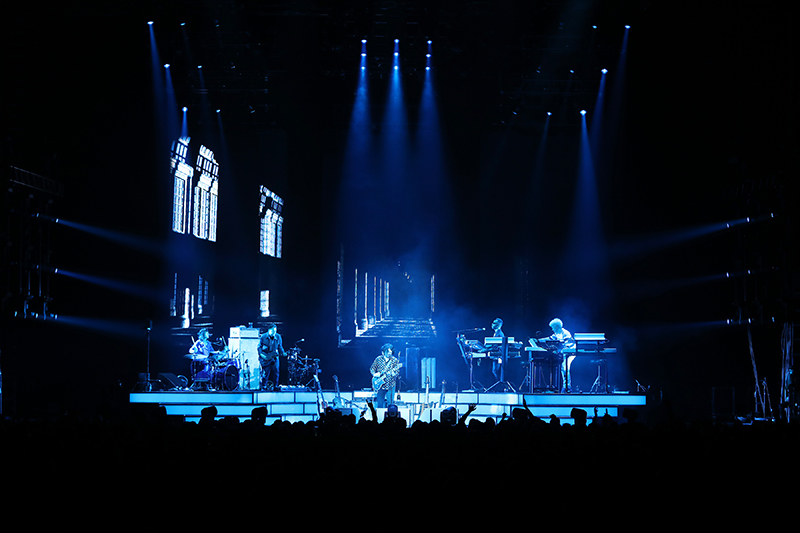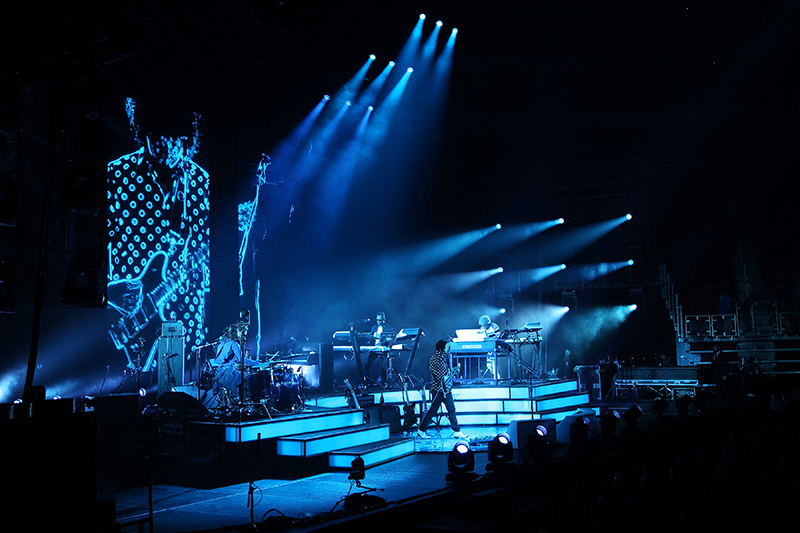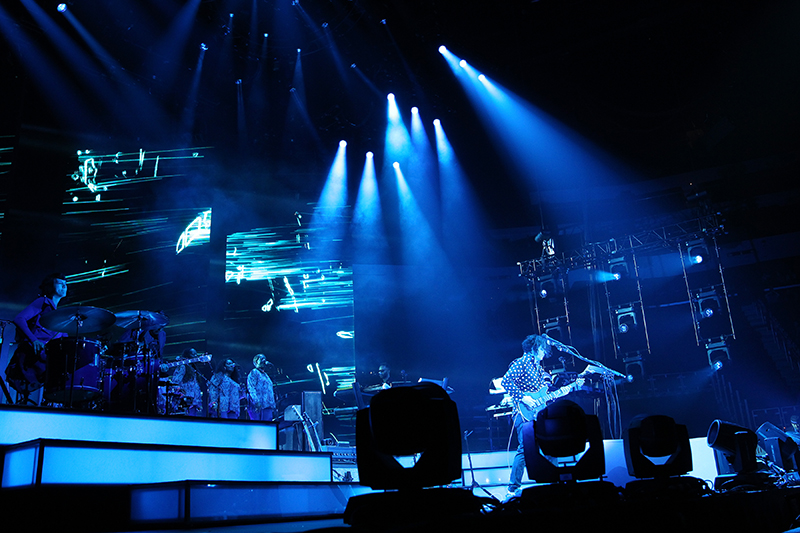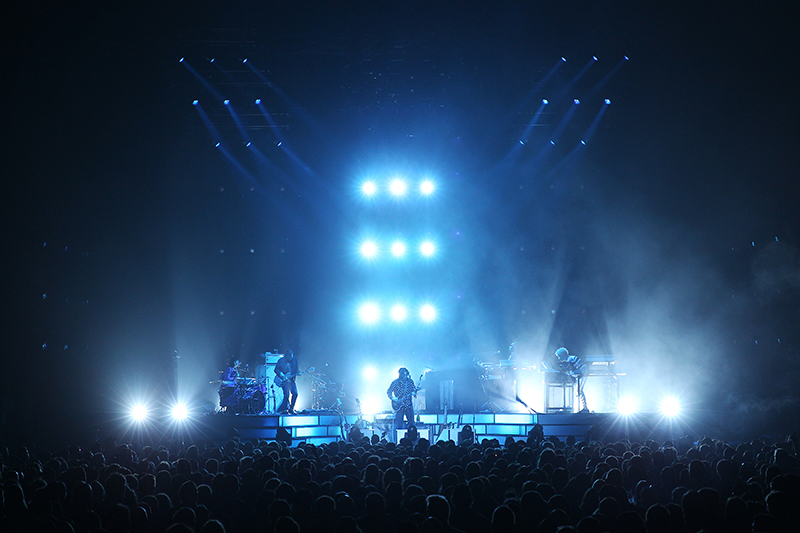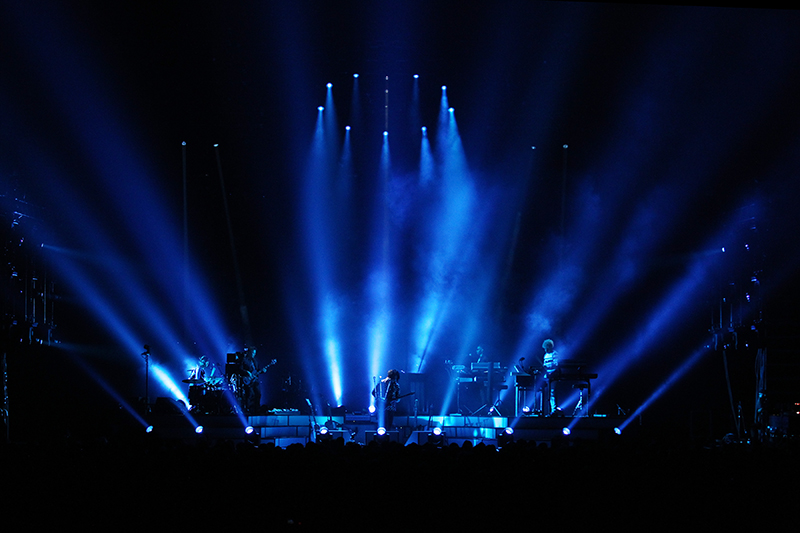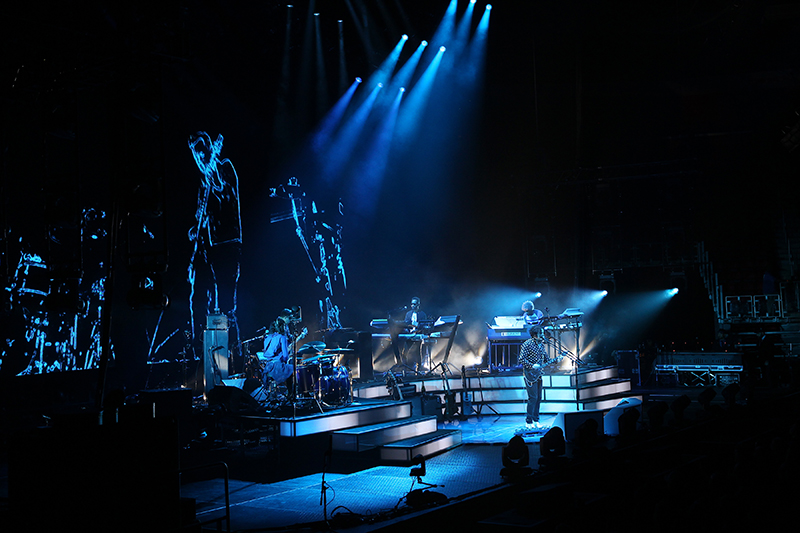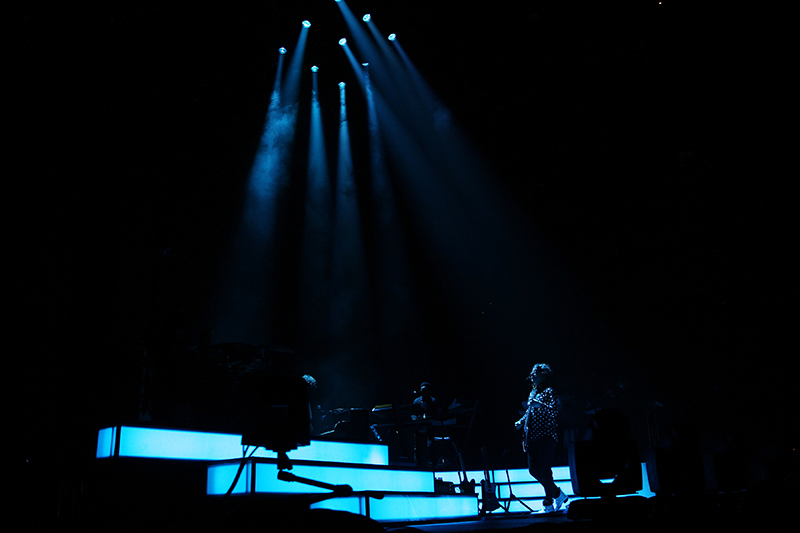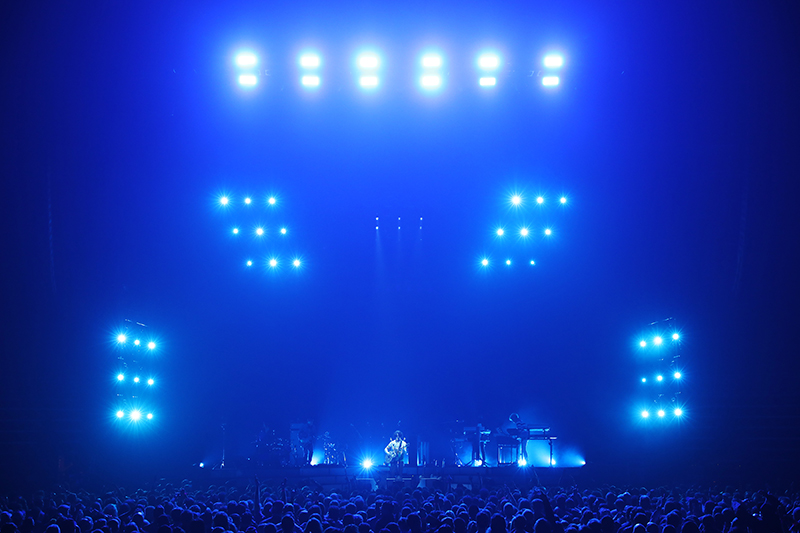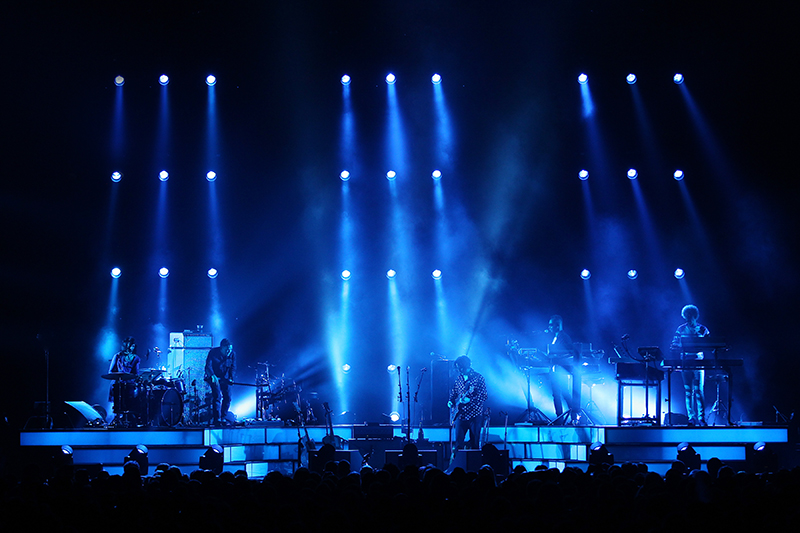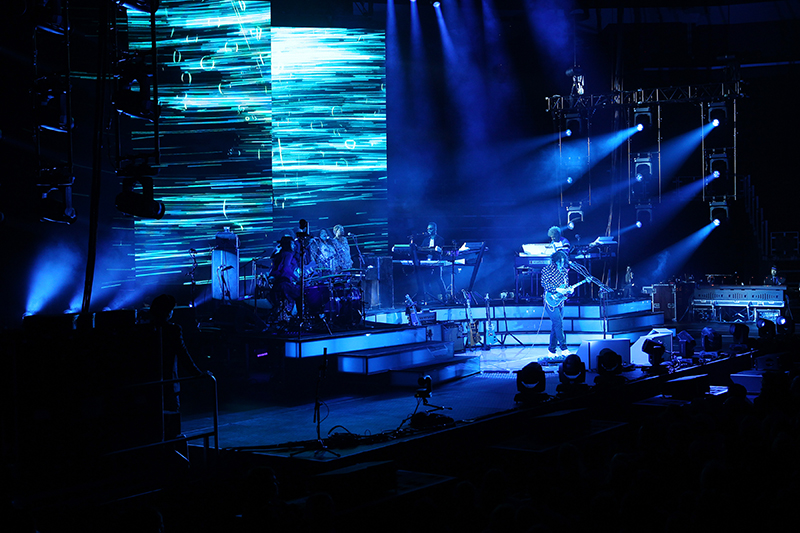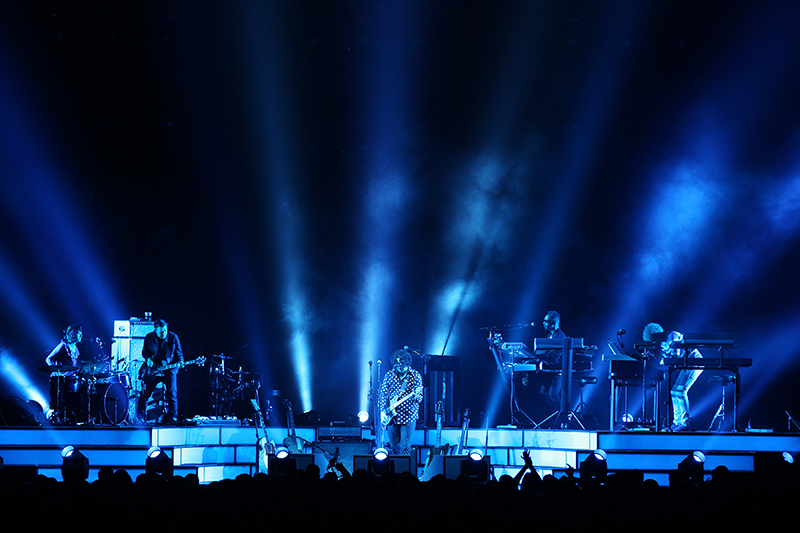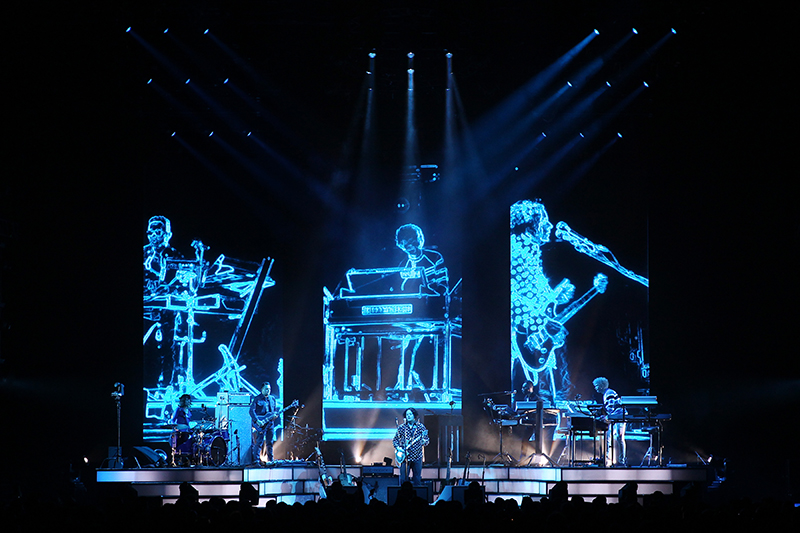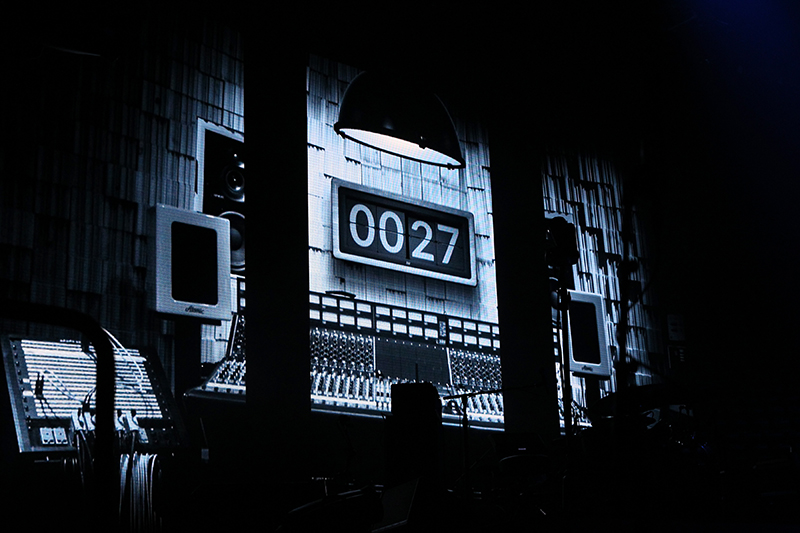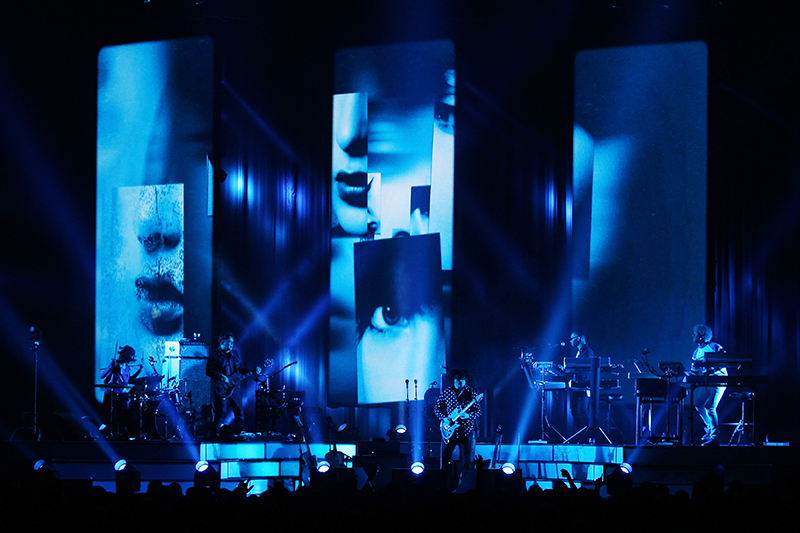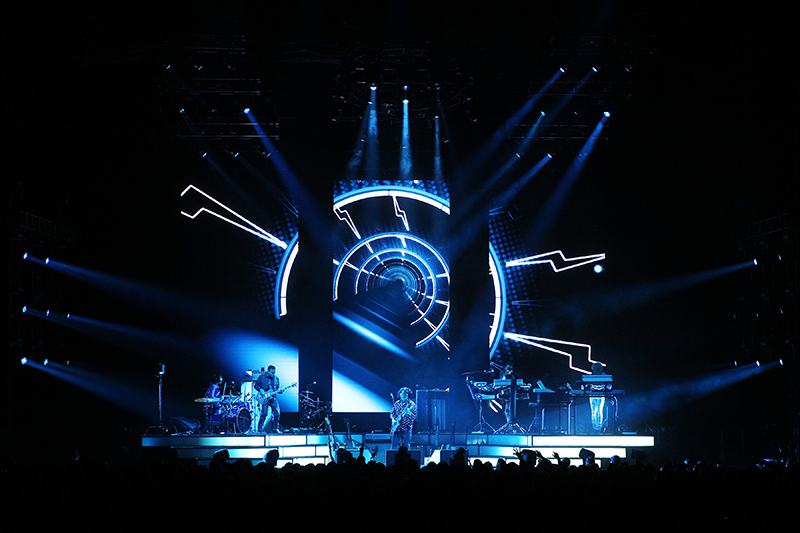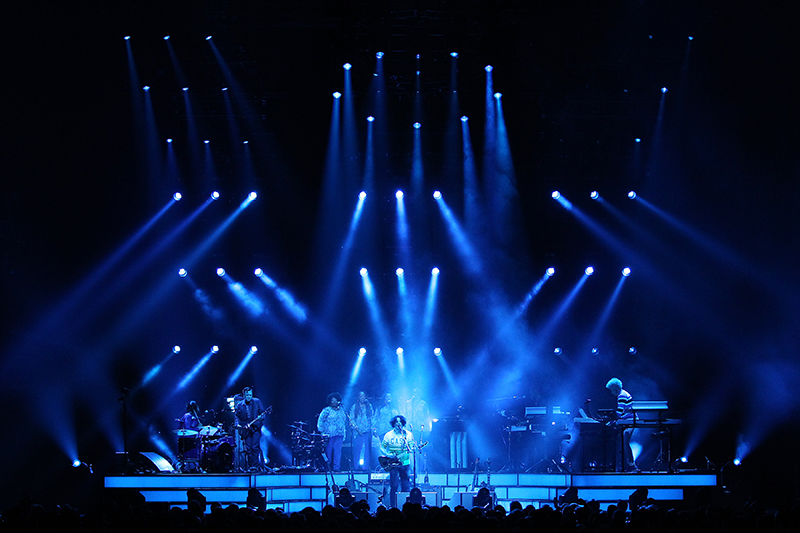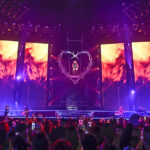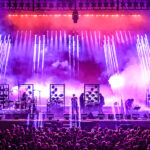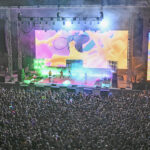With No Set List, Tour Keeps Crew On Their Toes
For the creatives chosen to put Jack White’s Boarding House Reach tour together, the challenge before them was equal parts invigorating and terrifying: There would be no set list, as in even White himself would not know what he was going to do next…and even when he starts a song, you’re not safe, because it could be a polka version of one of his rock tunes. Then he could decide at the first chorus to go into an entirely different song.
“Busking” is the order of the day, which the crew says they really enjoy, even if it causes some hair-raising moments. “Even when I do a time-code show, I’ll usually leave out a few accent buttons to hit so I don’t get completely bored, but this is a whole new level,” says lighting director Michelle Sarrat, with a laugh. “We have no idea what is about to happen. We have to try to figure out where he’s going by which guitar he picks up, or the tone of a test chord, or the first drum hits. I am constantly writing new looks and experimenting with my approach to the busking. I think his dearest wish is that he’ll never do the same exact show twice.”
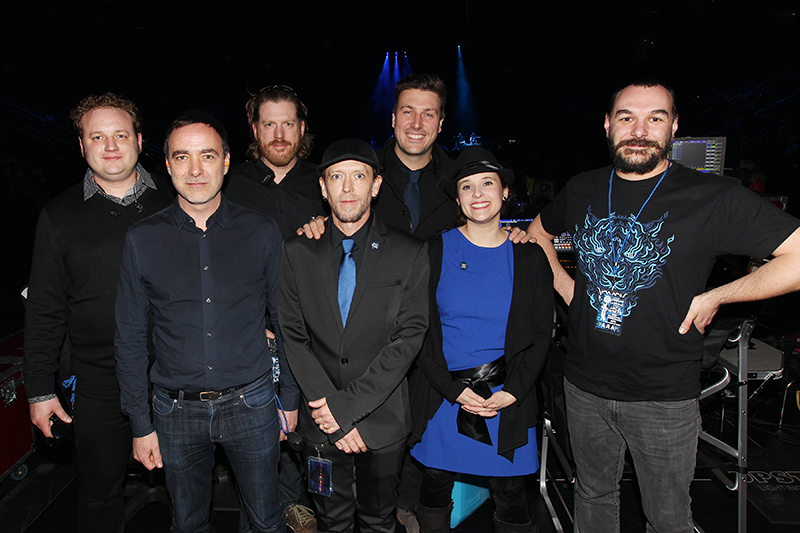
It’s Jack’s World
It all began at Montreal-based Lüz Studio. “I knew the biggest challenge was going to be creating a show that would play an arena one day and a club the next, so I wanted to create something that reflects Jack but is also flexible,” creative director Matthieu Larivée says. “This was the first time Jack was touring with video, so I wanted to create content that was not distracting and would let him breathe.”
As for creating a show with no set list, Larivée seems to have viewed it as an adventure: “We had the two operators, Michelle and Rob [McShane, video] come up here, and we practiced. We spent a lot of time together!” A tech rehearsal involved setting the two up at Upstaging’s facility in Chicago and Larivée dropping White songs from his iPod, and “seeing what they would do with it. I told them they can’t [mess] up because nobody knows what it’s supposed to be,” he laughs. “That is the spirit, the beauty of it.”
Regarding video, the team members knew they had to be especially flexible, so part of the video content was created for specific songs and other elements were more generic. “Being too generic does not always work, because there are various tempos and stories in the lyrics, and we did not want it to look like a VJ set either,” says Larivée. Part of the content was created with Notch, a VFX software that enables you to create interactive and video content in one unified, real-time environment. “The lights were audio-reactive, so the music was lighting up the 3D scenes created in the software, giving us live control of the virtual cameras and lights,” Larivée adds. “This allowed Jack to jam and go anywhere possible.” The Hippotizer Boreal handled all playback, and all the visual elements were run through a Green Hippo Hippotizer.
Another directive from the artist was on colors — specifically, one: Blue. “Jack’s shows have been blue for years; it’s the way he likes to perform,” Matthieu says. “But with the lighting and video content, we were able to expand on the shades of blue, and that was a good thing for the show. For me, it is not a bad thing [to have so much blue], because you know you’re in Jack’s world.” He designed that world with Jack surrounded by stage risers in a semi-circle behind it. The team had to accommodate White’s desire to go completely analog (no wireless). “Jack wanted to have a clean stage with no wedges [visible], so we incorporated a grated surface in our design,” Larivée says. The lights and wedges are attached and detached per show. “We are also doing festivals, so the riser has to roll quickly on stage.” They incorporated casters and made sure that the stairs had embedded lights, then made sure that the casters were not creating shadows. “We have used Upstaging Saber LED fixtures (thin strips of LEDs mounted in a row) — these are super lights and we were able to do animated effects in the stairs.” He made the choice to light the set with 18 Martin MAC Vipers from above. “It’s not a big rig, so the lights needed to be controlled precisely. The Vipers worked well.” He mixed in some Claypaky Sharpy washes. “I didn’t want to go the LED route because I felt those had too modern of an aesthetic.”
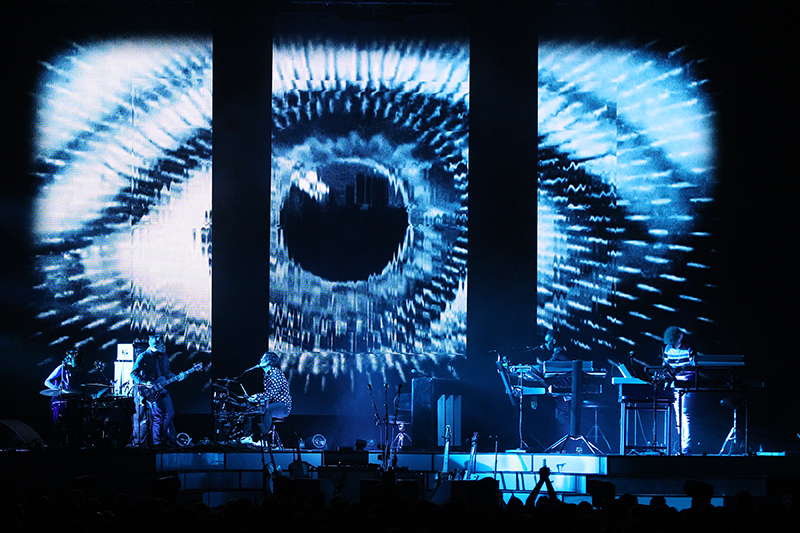
Elevating the Gig to “An Experience”
Although controversial, White bans cellphones at his shows. Also, the crew looks sharp: The guideline is suits and hats for the men, and dresses, skirts or nice slacks and blouses for the women. “I enjoy that we get to pick out our own wardrobe that we like as it makes us feel like a team, and the audience seems to really get kick out of it too!” Sarrat says, adding: “My take is that Jack has an appreciation for elevating a gig to an experience — making it something classy and out of the ordinary.” Sarrat is originally from Connecticut, where she “began flipping switches for plays in the catwalk above her junior high school auditorium.” She graduated in Theatrical Lighting Design at Emerson College, and then supported herself nabbing gigs at theaters and rental shops in the Boston area. Other acts she’s worked with include OK Go, Death Cab for Cutie, St. Vincent and Jimmy Eat World, among others. “This is my first tour out with Jack,” she says.
The show starts with the video countdown, an 80s-style digital clock ticking. “They shot that control room console footage at Jack’s Third Man studio, and people cheer whenever he walks through, or when he starts messing with the clock.” The footage is audio reactive, running through Notch, so the louder they cheer, the brighter it gets. The walk-in music is the one constant — it’s always “Nightmare” by Artie Shaw, pressed in 1937. “I think it’s a great lead into the jazz/blues/rock journey that he’s about to take the audience on,” Sarrat says.
The approach to each show is, in theory, planned, with specific ideas for specific songs “if he plays them, especially the big badass anthems like ‘Seven Nation Army,’ ‘Icky Thump’ or ‘Battle Cry.’ But everything is set up in so we can quickly veer left or right if he decides to go off script and do a live mashup of other songs or something,” Sarrat adds. “I have a variety of busk bump button banks, position stacks, etc., so that I can make the look bigger or smaller on the fly, depending on the vibe of the song and the energy onstage and in the audience.”
There are some “tricks” involved, she adds. “We definitely try to make use of the rotators as much as we can. When there’s been a bunch of songs where we’ve done video for a while, I’ll turn them to a different position and play with lights to mix it up. But we also have a whole bunch of really gorgeous video that Lüz Studio created, so we try to fit as much of that as we can in there as well.” Sarrat does all this busking on a grandMA2, as it is her go-to console, and you want your favorite in a situation like this. The show still required a lot of programming and show files that necessitated hours of work, and she says it would have been difficult to do on a different console.
But so…are there bad nights? Sarrat laughs. “On this tour, more than ever, I’m realizing how important it is to get enough sleep! The more mentally present I can be, the more nimbly I can follow what’s happening onstage. On some shows, you can roll up and muddle through it with muscle memory or whatever, but this is not one of them!”
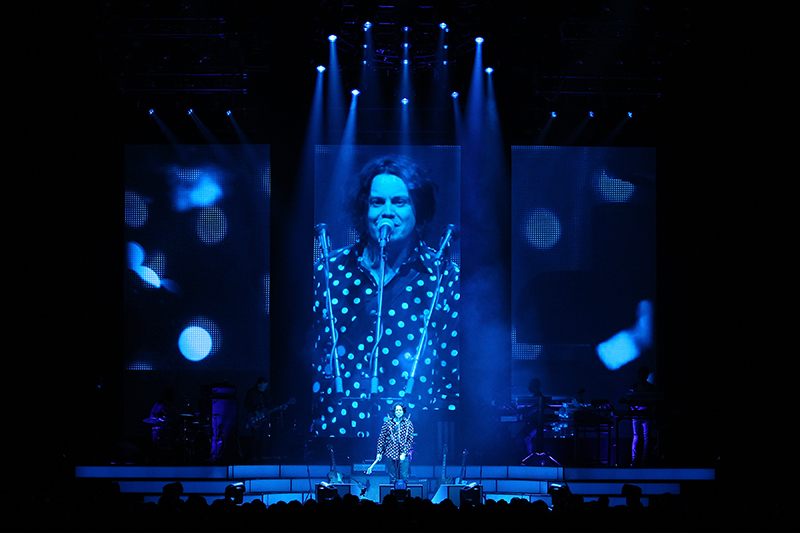
Timecode/Choreography? Not!
Rob McShane grew up in Houston, and worked on local crews there in the mid-90s before moving to L.A. and doing his first tour with a band called The Orb, back in 1997. From there he gigged with Primus, Rob Zombie, Korn, Godsmack and Blink 182. “I established myself as a video director in the mid 2000s and got to work and tour with a diverse group of artists from the Foo Fighters, Green Day, Stevie Wonder, Gwen Stefani, Guns N’ Roses, and then Lady Gaga for the better part of last year.”
This is McShane first tour with White. “I’ve been a fan of Jack, and honestly, after working on a show with 30 trucks and more than 10 buses, it was time for me to work with something a little smaller with a little less timecode and choreography.”
The video system of choice is a Blackmagic Designs ATEM 4ME video switcher with 11 cameras. “We have one Sony camera at FOH with a 70x long lens, five Panasonic robocams and five Marshall POV cams that mount on various instruments,” McShane says. “We are using three ACASS Systems video walls that are configured as the Roman numeral III on stage. We are not carrying any I-Mag screens for the sides and will usually just plug our I-Mag feed into house screens when we are in a festival situation.” But then it gets a bit complicated — McShane is controlling the show using a MIDI controller that runs cues through grandMA on PC, which then controls a set of Green Hippo Hippotizers that are running content and Notch effects for the content and the live inputs.
Atlanta Rigging Systems is looking after the motion control of the three video walls. Custom frames built by ARS held the ACASS System Modlock 7mm video tiles. These frames are connected to electric 8-rpm motors with a slew bearing that rotates them. These motors sit inside 30” x 20” truss. One side of the panel has the LED tiles, and the other has torms of automated lighting, so it can rotate to reveal video, lights, or at times, a mixture of both. (Images in this article show the panels angled at various degrees.)
McShane is a big fan of the countdown in the opening. “This is a really fantastic element that was created by the guys at Lüz Studio,” he says. “I love the reaction we get every night.” Then the show begins. “Someone said that it’s like Jack likes to put us all on roller skates and then throw marbles under our wheels,” McShane says. “That is a perfect analogy.” Every night is different, and one can’t even count on specific video content created for a specific song to come into play as one might think…like images for the “Why Walk a Dog” song. “Assuming that song should be played every night at some point — and there’s no guarantee of that — then that would be similar, from night to night. But if I thought we were close to the end of our set and had not heard that song yet, I may be brave enough to run [that video] to something else, knowing that the intended song might come up. That’s what’s so cool about this show, just being able to be creative and feel what is happening and act accordingly. I’ve definitely been mixing it up every night, and sometimes it works, and sometimes it feels weird.”
In St. Louis, one of the first shows of the tour, there were palpable moments of excited uncertainty with Sarrat and McShane glancing at each other tentatively, and then back at White, before quickly figuring out what he’s doing. “There are so many looks and moods that we can create and, by playing off each other, we can work with and complement each other’s look, rather than contrast it too much,” McShane says. “Jack likes to start a song very ‘bluesy’ and then kick into something rocking without missing a beat, or vice versa. It makes it easier when both Michelle and I are figuring out what is going on at the same time, and we stay on the same page that way.”
Sarrat emphasizes the team effort required to pull these shows off night after night. “[Crew chief] Justin Shaw and the rest of the Upstaging team have been fantastic and have really worked their butts off to help us get this off the ground and to make it happen every day — Rob and I couldn’t do it without them!”
Tour manager Lalo Medina has been with Jack and The White Stripes for so long, “his knowledge of the artist was and is super useful for me and my team,” Larivée says. “Lalo helped us understanding the content — the core of the show and was involved in all the creative process. Kit Blanchard, the TM who also worked previously with Jack, was my alter ego in the technical design,” Larivée adds. “Kit had the experience of previous Jack’s tour where they were playing in all sort of various venue scales. Also, the experience of how things that might happen. So working closely with Lalo and Kit was key to dig the nature of this journey.”
Jack White Boarding House Reach Tour
Crew
- Creative Director/LD: Matthieu Larivée/Lüz Studio
- Lighting Director: Michelle Sarrat
- Video Director: Rob McShane
- Video Content Director: Francis Laporte
- Lighting/Video Project Manager: David Rondeau
- Lighting/Video Co: Upstaging
- Lighting Crew: Justin Shaw (Crew Chief), Scott Norden, Chris JC Dries
- Video Crew: Steve McShane (Video Server Tech), Chris Luxton (Video Robocams), Sebastien Tilly (Notch Designer)
- Motion Control: ARS Entertainment Rigging
- Automation/Rigging: Danial Kirby
- Production Design Asst, and Motion designer: Jonas Libon
- Set: Accurate Staging
- Tour Manager: Lalo Medina
- Production Manager: Kit Blanchard
- Vice Tour Manager: Molly Moormeir
- Production Assistant/Coordinator: Bennett Moon
- Stage Manager: Cad Brouillette
- Backline: Dan Mancini, Derek Brown, Josh Smith
Gear
- 2 grandMA2 consoles
- 54 Claypaky Sharpy Wash 330’s
- 46 Martin Vipers
- 71 Martin Viper Air FX fixtures
- 23 TMB Solaris Flares
- 64 Upstaging Saber LED 250’s
- 60 Upstaging Saber LED 500’s
- 12 Upstaging Saber LED 1000’s
- 54 ACASS Modlock 7mm LED panels
- 1 Hippotizer Boreal media server
More photos by Todd Kaplan:
